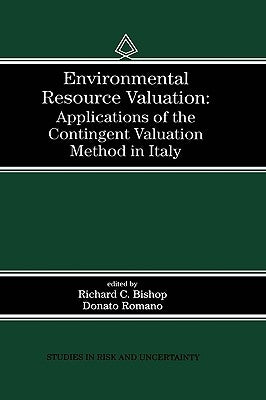1
/
of
1
Springer
Environmental Resource Valuation: Applications of the Contingent Valuation Method in Italy
Environmental Resource Valuation: Applications of the Contingent Valuation Method in Italy
Regular price
$288.66 USD
Regular price
Sale price
$288.66 USD
Shipping calculated at checkout.
Quantity
Couldn't load pickup availability
Economic values are increasingly used in policy analysis and legal settings. With the growing recognition that many of the things that benefit or harm people are outside the market system, have come increasing efforts to develop nonmarket valuation techniques. One such technique is the contingent valuation method (CVM). CVM seeks to value environmental and other nonmarket goods and services by asking individuals about their values using survey methods. These procedures are different from the revealed-preference' methods that economists have historically employed to estimate economic values.
Why depart from well-established revealed-preference procedures and apply a stated-preference' method like CVM? For nonmarket goods and services, revealed-preference methods have two shortcomings that those applying CVM hope to avoid. First, revealed-preference methods involve econometric problems that have yet to be fully overcome. The second shortcoming of revealed-preference methods is that such methods, when applied to environmental amenities, are likely to be only partial measures of value.
Given the tremendous interest that exists in economic values and the limitations of revealed-preference methods, it is not surprising that interest in CVM has grown rapidly. Environmental Resource Valuation reviews the application of CVM and compares American experiences in nonmarket evaluation with those in other countries.
Author: Richard C. Bishop
Publisher: Springer
Published: 04/30/1998
Pages: 286
Binding Type: Hardcover
Weight: 1.33lbs
Size: 9.21h x 6.14w x 0.69d
ISBN: 9780792381433
Why depart from well-established revealed-preference procedures and apply a stated-preference' method like CVM? For nonmarket goods and services, revealed-preference methods have two shortcomings that those applying CVM hope to avoid. First, revealed-preference methods involve econometric problems that have yet to be fully overcome. The second shortcoming of revealed-preference methods is that such methods, when applied to environmental amenities, are likely to be only partial measures of value.
Given the tremendous interest that exists in economic values and the limitations of revealed-preference methods, it is not surprising that interest in CVM has grown rapidly. Environmental Resource Valuation reviews the application of CVM and compares American experiences in nonmarket evaluation with those in other countries.
Author: Richard C. Bishop
Publisher: Springer
Published: 04/30/1998
Pages: 286
Binding Type: Hardcover
Weight: 1.33lbs
Size: 9.21h x 6.14w x 0.69d
ISBN: 9780792381433
This title is not returnable
Share


